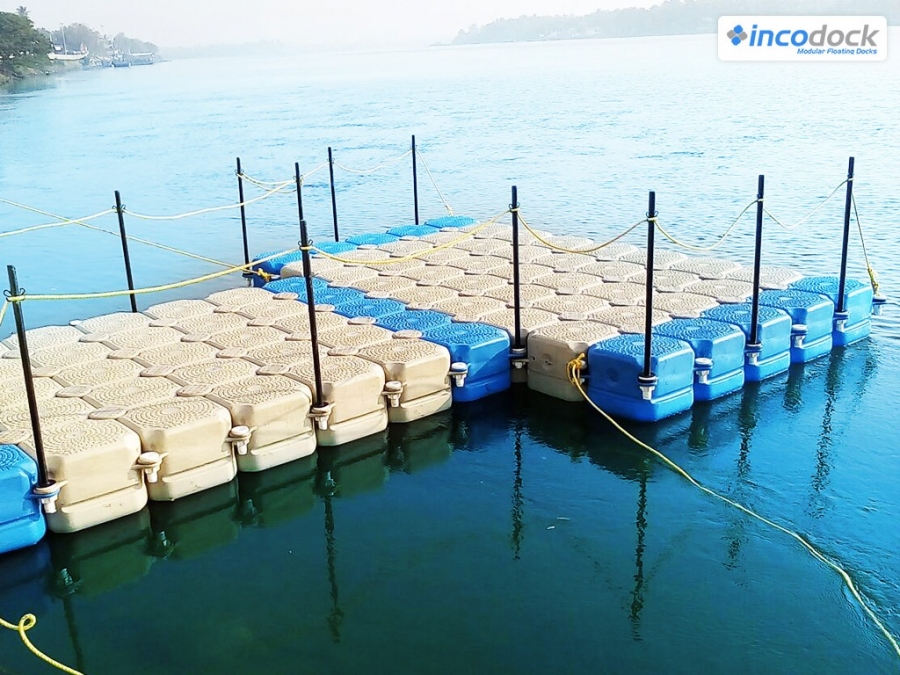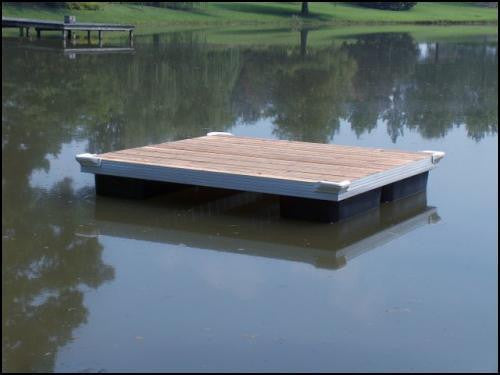Floating Docks: The Smart Choice for Modern Waterfront Living and Recreation
Floating Docks: The Smart Choice for Modern Waterfront Living and Recreation
Blog Article
Develop the Perfect Docking Service With Floating Docks
Floating docks existing a flexible service for a variety of maritime demands, adapting seamlessly to fluctuating water degrees and diverse vessel kinds. As we check out the important components that contribute to the effectiveness of floating docks, numerous essential factors pertaining to stability and maintenance will certainly emerge, increasing questions concerning exactly how to enhance your docking experience.

Advantages of Floating Docks
Floating docks offer various benefits that make them an ideal choice for different maritime applications. One of the main benefits is their versatility to transforming water degrees. Unlike fixed docks, floating docks surge and autumn with the trend, making certain consistent accessibility for vessels. This feature is particularly essential in areas prone to significant tidal fluctuations or seasonal water level changes.
In addition, floating docks are typically easier and quicker to mount contrasted to conventional fixed frameworks. Their modular layout permits straightforward setting up and disassembly, promoting upkeep and relocation when necessary. This versatility is particularly beneficial for short-lived applications or in environments where conditions may alter.
Floating docks likewise have a tendency to be more eco-friendly, as they reduce disturbance to the seabed and bordering aquatic communities. Their resilient nature decreases the risk of damages to aquatic life, promoting a much healthier atmosphere. These docks can be customized to fit numerous vessel sizes, making sure that they fulfill particular functional needs.
Eventually, the mix of adaptability, simplicity of installment, and environmental considerations makes floating docks a highly efficient remedy for a wide variety of maritime needs.
Choosing the Right Materials
Choosing the ideal materials for floating docks is critical to guarantee stability, long life, and longevity. The choice of materials directly impacts the dock's efficiency in different ecological problems, consisting of direct exposure to water, sunshine, and possible wear from aquatic website traffic.
Usual products made use of for floating docks consist of light weight aluminum, wood, and high-density polyethylene (HDPE) Aluminum is lightweight, corrosion-resistant, and requires minimal maintenance, making it an exceptional option for durability. Its preliminary cost can be higher contrasted to various other products.
Wood, while aesthetically appealing and giving a typical appearance, can be at risk to rot and bug damage if not properly dealt with. Making use of pressure-treated timber or naturally sturdy varieties like cedar or redwood can minimize these problems.
HDPE is a prominent selection as a result of its resistance to UV rays and chemicals, together with being environmentally pleasant. floating docks. It is lightweight and readily available in different colors, permitting for customization
Inevitably, the best product option will depend upon specific demands, including budget plan, desired aesthetics, and ecological considerations. Cautious evaluation of these aspects will certainly lead to a successful and durable floating dock solution.
Layout Considerations for Security
When designing floating docks, ensuring security is an essential aspect that can considerably affect their performance and safety and security. Stability in floating dock layout is affected by various elements, consisting of buoyancy, weight circulation, and the arrangement of parts. An ideal buoyancy system need to use products that provide sufficient lift while lessening weight. This equilibrium guarantees that the dock stays above water, also under differing lots.
Weight distribution is important; uniformly dispersing tons across the dock avoids tilting and enhances security. This can be achieved through strategic placement of docking tools, such as fenders and cleats, as well as correct spacing of drifts. In addition, the measurements of the dock must be thoughtfully planned. Wider designs can supply raised security, specifically in rough water conditions, while longer docks might call for extra supports to stop sagging.
One more key factor to consider is the ecological impact, consisting of wave action and wind. Incorporating attributes such as sidewalls or skirting can assist mitigate the results of environmental pressures, preserving security in unfavorable conditions. Eventually, a combination of thoughtful layout, material choice, and understanding of environmental aspects will produce a floating dock that satisfies both security and security needs.
Setup Tips and Strategies

Following, safeguard the necessary licenses and abide by neighborhood laws, which might determine setup methods and environmental factors to consider. Involve a certified service provider experienced in floating dock setups if needed. Use check over here top quality materials made for aquatic atmospheres to enhance resilience and longevity.
When placing the dock, align it parallel to the coastline to assist in easy access. Make certain that the anchoring system is robust, employing cinder block or helical anchors to stabilize the dock versus wind and wave action. It's important to account for seasonal water degree changes, consisting of prospective ice movement in cooler climates.
Throughout the setup, double-check the dock's floatation and security before settling the anchoring. Regularly inspect the setup for any indicators of wear or damages. By complying with these ideas and methods, you can accomplish a secure, useful, and visually pleasing floating dock setup that meets your demands.
Maintenance and Care Standards
Caring and preserving for floating docks is critical to lengthening their life expectancy and ensuring secure use. Routine inspections must be conducted to identify any signs of wear, damages, or aquatic development. Try to find fractures, loose installations, or tarnished locations on the dock's surface area, as these concerns can endanger architectural honesty.
Cleansing is vital. Make use of a pressure washing machine to get rid of algae, barnacles, and particles, which can collect in time. For persistent development, think about eco-friendly cleaner that will not hurt aquatic life.
Furthermore, inspect the mooring lines and supports frequently to guarantee they are complimentary and safe and secure from deterioration. Replace any kind of torn or harmed lines promptly to maintain security.
Throughout severe weather, such as click here for more storms or freezing problems, take precautionary measures. Protect the dock with added mooring lines and, if practical, get rid of any kind of removable elements to stop damages.
Conclusion
In conclusion, the execution of floating docks presents a efficient and versatile docking solution appropriate for different maritime applications. With proper installment and routine maintenance, floating docks can provide efficient and trusted docking experiences for a vast range of vessels.
As we check out the important components that contribute to the efficiency of floating docks, several essential aspects pertaining to security and maintenance will certainly arise, elevating concerns regarding how to enhance your docking experience. Unlike dealt with docks, floating docks increase and autumn with the tide, ensuring regular availability for vessels.When creating floating docks, ensuring security is an essential element that can substantially impact their performance and safety and security. Stability in floating dock design is influenced by numerous aspects, consisting of buoyancy, weight circulation, and the plan of elements. Eventually, a mix of thoughtful design, material choice, and understanding of ecological elements will certainly generate a drifting dock that meets both stability and safety demands.
Report this page